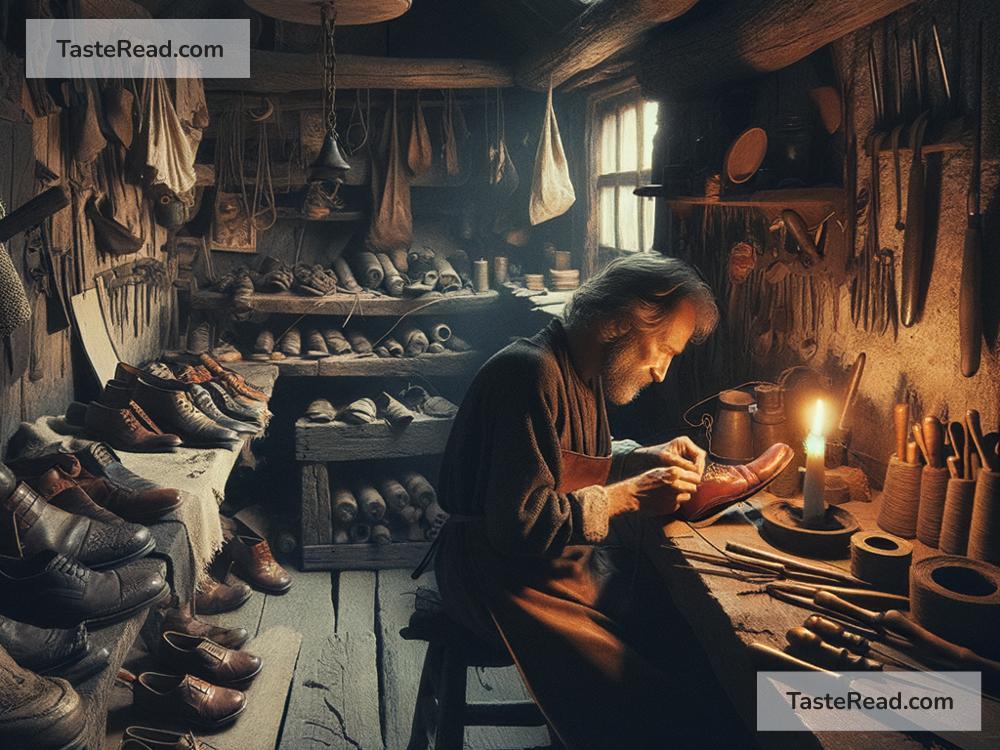The Origins of the First Cobbler in Ancient Tales
Shoes are such a big part of our lives today that we don’t often think about where they came from or who made them. But every invention has a story, and the story of the first cobbler—the craftsperson who makes and repairs shoes—is full of mystery, ancient legends, and ingenuity. Many ancient civilizations had their own myths and tales about the origins of shoemaking, and piecing these stories together helps us understand humanity’s creativity in solving everyday problems.
Why Did Humans Need Shoes?
Thousands of years ago, early humans lived in harsh environments. They walked on rugged and rocky terrain and endured extreme weather. Walking barefoot in these conditions was difficult, and it could injure or hurt their feet. Over time, humans began to think of ways to protect their feet. Early shoes were likely simple: animal hides tied around the foot to act as a layer between skin and the ground. By solving the problem of hurting feet, the first step toward shoemaking was taken.
But shoes didn’t just help people walk comfortably; they became symbols of status, culture, and ingenuity. As societies grew, so did the demand for better-crafted, longer-lasting, and more stylish shoes. This gave rise to cobblers, skilled artisans who dedicated their lives to crafting and repairing footwear.
Early Shoe Makers Around the World
Before we dive into cobbler tales, let’s take a quick look at ancient history. Archaeologists have found footwear dating back thousands of years. The oldest known shoes are over 5,000 years old, discovered in a cave in Armenia. These shoes were made of leather and carefully stitched together—proving that even back then, humans were skilled in crafting shoes.
Ancient Egypt, Mesopotamia, and Greece also played important roles in shoemaking. In Egypt, sandals were made using palm leaves and papyrus. Mesopotamians created shoes with woven fabrics, while Greeks developed sturdy leather sandals that were tied around the ankle. Romans took shoemaking to the next level, creating boots for soldiers to march long distances.
Though shoemaking techniques evolved, cobblers were often humble artisans, repairing and improving footwear for both the rich and the poor. It wasn’t always a glamorous job, but cobblers were essential to keeping people moving.
Mythical Tales About the First Cobbler
Like many crafts, shoe-making has its share of ancient tales and legends. One of the most popular myths about cobblers comes from the story of Vulcan, the Roman god of fire and craftsmanship. Vulcan was believed to have worked with leather and other materials, creating items for the gods. Legends say that Vulcan might have inspired cobblers by inventing techniques for molding leather and metal.
Another tale leads us to the ancient Greek smith god, Hephaestus, who had unmatched skill in metalwork and crafting. Some believe Hephaestus might have inspired the idea of creating fitted shoes for better protection and comfort. While there’s no proof these mythical figures were cobblers per se, their stories highlight the importance of craftsmanship, which includes shoemaking.
In medieval European folklore, storytellers introduced legends about humble cobblers who performed heroic deeds. One such story tells of a cobbler who repaired shoes for a knight. The knight was so impressed by the cobbler’s dedication that he invited him to fix all the soldiers’ boots before a great battle. The cobbler’s expert work helped the soldiers march farther and win the fight. This tale shows how vital cobblers were—not just as artisans, but as contributors to society’s well-being.
The Cobbler’s Workshop in Ancient Times
What was it like in a cobbler’s workshop long ago? Though we don’t have direct accounts, historians say that ancient cobblers likely worked in tiny spaces filled with tools like awls, needles, and thread. Leather was the most common material used, as it was durable and easy to mold. Cobblers shaped leather to fit different foot sizes and carefully stitched it together to make shoes strong enough to last through daily use.
Unlike today’s mass production of shoes, ancient cobblers made every shoe by hand. This made their work special but also time-consuming. Custom shoes were often reserved for kings, nobles, or warriors, while common people repaired and reused old shoes instead of buying new ones.
Cobbler Tales in Modern Times
Even today, cobblers have a special place in storytelling. Many fairy tales feature “The Cobbler” as a clever, hard-working character. One famous story is The Elves and the Shoemaker, where magical elves secretly help a struggling cobbler by crafting beautiful, perfect shoes overnight. The story celebrates kindness, hard work, and gratitude.
A Legacy That Lives On
Although shoemaking is now dominated by factories and machines, cobblers continue to exist in many corners of the world. They are experts in repairing shoes, giving old pairs new life, and even crafting custom designs. The first cobblers from ancient tales may remain mysterious, but their creativity and dedication paved the way for shoe-making as we know it today.
From legends to humble workshops, the story of the first cobbler is a reminder of human ingenuity and the power of working with our hands. Every step we take today—whether in sneakers, boots, or sandals—is a tribute to this centuries-old craft. So the next time you put on your shoes, take a moment to remember the cobblers who helped us get here!


